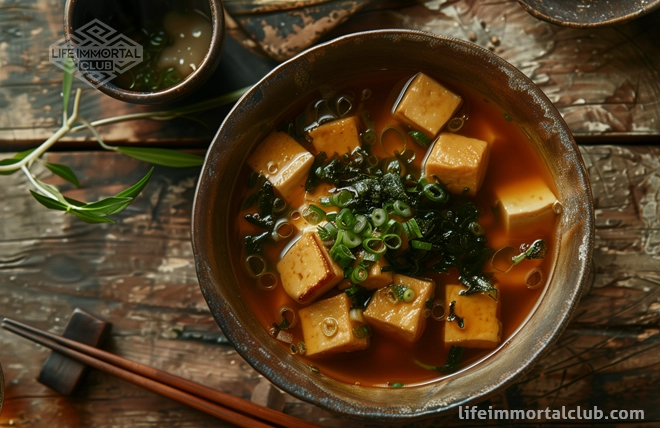What are the Phenolic Compounds in Cacao?

Introduction to Cacao and Phenolic Compounds
Brief overview of cacao as a plant and its historical significance
Cacao, scientifically known as Theobroma cacao, is a small evergreen tree native to the tropical regions of Central and South America. Renowned for its flavorful beans, cacao has held immense cultural and historical significance for centuries. The ancient civilizations of the Mayans and Aztecs revered cacao, considering it a divine gift from the gods.
They used the beans to prepare ceremonial beverages, often reserving them for royalty and special occasions. Apart from its cultural heritage, cacao also played a vital role in trade among ancient civilizations.
The beans were highly valuable and even used as currency in some regions. This trade eventually introduced cacao to European explorers who then spread it globally, leading to the establishment of vast plantations in various countries.
Introduction to phenolic compounds and their importance in cacao
Phenolic compounds are naturally occurring bioactive substances found abundantly in plants, including cacao. They are responsible for numerous beneficial characteristics associated with plant-based foods such as antioxidant properties, flavor development, color pigmentation, and potential health benefits.
In relation to cacao specifically, phenolic compounds play a crucial role in defining its sensory profile by contributing distinct flavors and aromas that make chocolate so enticing. Additionally, these compounds have gained significant attention due to their potential health-promoting effects on human physiology.
The concentration of phenolics varies among different parts of the cacao tree; however, it is primarily concentrated in the seeds or beans that are used for making chocolate products. Understanding these phenolic compounds is vital not only for better appreciating the complexity of flavors in chocolate but also for unraveling their potential health benefits when consumed.
Thus, this article aims to delve deeper into exploring the chemistry of phenolic compounds in cacao, their health benefits, and the factors influencing their presence and levels in cacao beans. By gaining a comprehensive understanding of these compounds, we can appreciate the intricacies of cacao and its potential impact on human well-being.
The Chemistry of Phenolic Compounds in Cacao
Explanation of the chemical structure of phenolic compounds
Phenolic compounds are a diverse group of secondary metabolites found abundantly in various plants, including cacao. They are characterized by a benzene ring bearing one or more hydroxyl groups (-OH).
This unique chemical structure is responsible for their antioxidant properties and numerous health benefits. The presence of phenolic compounds in cacao contributes to its distinctive flavor, aroma, and potential medicinal properties.
Overview of the different classes of phenolic compounds found in cacao
Cacao beans contain several classes of phenolic compounds that contribute to their overall composition. Among these, flavanols (catechins and epicatechins) are the most well-known and studied. Flavanols are monomers that form the building blocks for larger polymers called proanthocyanidins, also known as condensed tannins.
These substances give cacao its characteristic bitterness. Anthocyanins are water-soluble pigments responsible for the vibrant colors seen in certain varieties of cacao beans, ranging from deep red to purple.
These compounds not only add visual appeal but also contribute to the antioxidant capacity and potential health benefits associated with consuming cacao. Flavonols such as quercetin, kaempferol, and myricetin can also be found in significant amounts in cacao beans.
These molecules possess potent antioxidant properties and have been linked to various health benefits including cardiovascular health and inflammation reduction. Phenolic acids like caffeic acid and ferulic acid are another class commonly found in cacao beans.
Besides acting as antioxidants themselves, these acids can form ester linkages with other molecules present in chocolate during processing, thus affecting flavor development. The chemistry of phenolic compounds within cacao is a fascinating subject.
The diverse range of phenolic compounds found in cacao, such as flavanols, anthocyanins, flavonols, and phenolic acids, contribute to the complex flavor profile of chocolate and offer potential health benefits. Understanding the chemical structure and classification of these compounds enhances our appreciation for the unique properties that make cacao a beloved ingredient worldwide.
Health Benefits of Phenolic Compounds in Cacao
Antioxidant properties and their role in reducing oxidative stress
Phenolic compounds found in cacao possess potent antioxidant properties, making them valuable defenders against harmful free radicals within the body. Free radicals are unstable molecules that can damage cells and contribute to aging, inflammation, and various diseases.
The antioxidants in cacao's phenolic compounds help neutralize these free radicals, preventing oxidative stress and its detrimental effects. One of the primary antioxidant groups found in cacao is flavanols, specifically catechins and epicatechins.
These compounds scavenge free radicals, inhibiting their ability to cause cellular damage. Studies have shown that regular consumption of cacao rich in flavanols can significantly increase antioxidant capacity within the bloodstream, providing long-lasting protection against oxidative stress.
Cardiovascular benefits, including improved blood flow and lower blood pressure
The phenolic compounds present in cacao have been extensively studied for their potential cardiovascular benefits. Flavanols found abundantly in cacao exhibit remarkable effects on improving blood flow and reducing blood pressure. Flavanols promote vasodilation by stimulating the production of nitric oxide (NO) within endothelial cells lining blood vessels.
Nitric oxide helps relax the smooth muscles around arteries, resulting in widened blood vessels and enhanced circulation throughout the body. Improved blood flow not only aids efficient oxygenation of tissues but also plays a crucial role in maintaining healthy cardiovascular function.
Additionally, studies suggest that regular consumption of cacao rich in phenolic compounds may help lower blood pressure levels due to its ability to dilate blood vessels. By promoting vasodilation and improving circulation, these bioactive compounds contribute to overall cardiac health.
Anti-inflammatory effects and potential for reducing chronic diseases
Chronic inflammation is a common underlying factor associated with various diseases, including cardiovascular disorders, diabetes, and certain types of cancer. The phenolic compounds in cacao have been shown to possess anti-inflammatory properties, making them potential allies in the prevention and management of chronic diseases. Phenolic acids found in cacao, such as caffeic acid and ferulic acid, exhibit anti-inflammatory effects by inhibiting the activity of pro-inflammatory enzymes and cytokines.
These compounds help modulate inflammatory pathways within the body, leading to reduced inflammation levels. Furthermore, flavonols present in cacao, such as quercetin and kaempferol, have been associated with a decreased risk of chronic diseases due to their anti-inflammatory properties.
By interfering with inflammatory processes at a molecular level, these compounds may contribute to overall health by mitigating inflammation-related risks. The phenolic compounds found abundantly in cacao offer numerous health benefits.
Their antioxidant properties help combat oxidative stress within the body. Additionally, these compounds aid cardiovascular health by improving blood flow and reducing blood pressure.
Furthermore, the anti-inflammatory effects of phenolic compounds make them potential allies in reducing chronic disease risks associated with inflammation. Incorporating cacao rich in phenolic compounds into a balanced diet may provide substantial advantages for overall well-being.
Sources and Levels of Phenolic Compounds in Cacao Beans
There are various factors that contribute to the phenolic content in cacao beans, ultimately determining the levels of these compounds. These factors include genetic factors, environmental conditions, and post-harvest processing techniques. Understanding these influences is crucial for both researchers studying cacao phenolics and chocolate connoisseurs seeking the finest quality.
Genetic Factors
The genetic makeup of cacao trees plays a significant role in determining the phenolic content in their beans. Different varieties or cultivars exhibit variations in their phenolic profiles due to inherent genetic differences.
For instance, certain varieties may contain higher amounts of flavanols like catechins and epicatechins, while others may have a greater abundance of flavonols or anthocyanins. This indicates that selective breeding programs could potentially enhance specific types of phenolic compounds desired for different applications.
Environmental Conditions
Environmental conditions greatly influence the development and accumulation of phenolic compounds in cacao beans. Factors such as climate, soil composition, altitude, rainfall patterns, and sunlight exposure all contribute to variations in the plant's metabolism and subsequent synthesis of phenolics.
For instance, cacao trees grown at higher altitudes tend to produce beans with higher levels of flavonols due to increased exposure to ultraviolet (UV) radiation. Additionally, temperature fluctuations during fruit maturation can also impact the formation of specific classes of phenolics.
Post-Harvest Processing Techniques
The post-harvest processing techniques employed after cacao bean harvesting can significantly affect the final levels of phenolic compounds present in the beans. The complex processes involved include fermentation, drying, roasting, and grinding.
Fermentation is a critical step that allows enzymes naturally present within cacao beans to metabolize sugars into organic acids while promoting phenolic compound formation and transformation. The duration and temperature of fermentation, as well as specific microbial activity, can influence the final phenolic profile.
Subsequently, drying the fermented beans further impacts phenolics by reducing moisture content. Variations in phenolic compound levels across different cacao varieties or origins are also observed.
Each variety has unique characteristics influenced by its genetic background and environmental conditions, leading to distinct phenolic compositions. Additionally, factors such as soil quality, rainfall patterns, temperature range, and even pollination dynamics may differ between regions where cacao is cultivated.
As a result, cacao beans sourced from various origins possess different flavor profiles attributed to their distinctive phenolic content. The intricate interplay between genetic factors, environmental conditions, and post-harvest processing techniques determines the sources and levels of phenolic compounds found in cacao beans.
By comprehending these influences on cacao's chemical composition, it becomes possible to tailor cultivation practices that enhance desirable phenolics or craft chocolates with specific flavor profiles derived from unique cacao varieties or origins. Such knowledge not only enriches scientific research but also heightens appreciation for the captivating complexities of this beloved tropical plant.
Processing Methods Impact on Phenolic Compound Content
Effects of Fermentation on Phenolics
During the fermentation process, the phenolic compounds in cacao undergo significant changes that contribute to the development of its characteristic flavors and aromas. Fermentation is a crucial step in cacao processing, as it initiates biochemical reactions that influence the composition and concentration of phenolics.
The heat generated during fermentation triggers enzymatic reactions, leading to the breakdown of complex compounds into simpler ones. Specifically, flavanols (catechins and epicatechins) are transformed into flavan-3-ols (procyanidins), which are responsible for the astringency and bitterness observed in cacao products.
Changes during Fermentation Process
As fermentation progresses, there is an increase in temperature and pH levels, creating an environment conducive to various enzymatic activities. These enzymes facilitate the conversion of flavanols into procyanidins, resulting in a decrease in overall flavanol content but an increase in procyanidin concentrations.
Additionally, other phenolic compounds such as anthocyanins and flavonols may undergo degradation or transformation during fermentation. It is worth noting that fermentation duration and conditions can greatly influence these changes, highlighting the importance of carefully monitoring this critical stage.
Impact on Flavor Development
The alterations occurring during fermentation not only affect phenolic compound content but also impact flavor development in cacao. As catechins transform into procyanidins through enzymatic processes, they contribute to the bitterness and astringency experienced when consuming chocolate products.
The balance between these characteristics plays a vital role in achieving desirable flavor profiles. Moreover, other volatile compounds are formed during fermentation which contribute to fruity or floral aromas found in high-quality chocolate.
Influence of Roasting on Phenolics
Roasting, another essential step in cacao processing, further influences the phenolic compounds present in the beans. The application of heat during roasting affects the composition and concentration of phenolics and greatly contributes to the final product's flavor and color.
Changes during Roasting Process
Roasting triggers chemical reactions that lead to the breakdown of complex polyphenols into simpler compounds. Flavanols undergo oxidation, resulting in changes to their structure and flavor characteristics.
Additionally, high temperatures encountered during roasting may cause some phenolic compounds to degrade or transform into new ones. Each roasting profile can have a distinct impact on phenolic composition due to variations in temperature, duration, and airflow.
Influence on Flavor Development
The roasting process is crucial for developing the rich flavors associated with chocolate. Phenolic compounds contribute not only bitterness but also desirable aroma and taste notes such as nuttiness, caramelization, and roasted flavors. The combination of specific roasting parameters with unique cacao bean characteristics creates a symphony of flavors that evoke pleasure and satisfaction when enjoying chocolate products.
Conclusion
The processing methods applied to cacao beans significantly influence the content of phenolic compounds found in chocolate products. Fermentation serves as a catalyst for various enzymatic reactions that convert flavanols into procyanidins while contributing to flavor development through bitter and astringent notes. Roasting complements this transformation by further modifying the phenolics' structure, resulting in an array of complex flavors that make chocolate so enjoyable.
Understanding these effects allows for greater control over product quality by optimizing fermentation and roasting techniques. So next time you savor a piece of exquisite chocolate, appreciate how these meticulously crafted processes enhance both your palate's delight and your overall well-being through the health-promoting properties of phenolic compounds.







